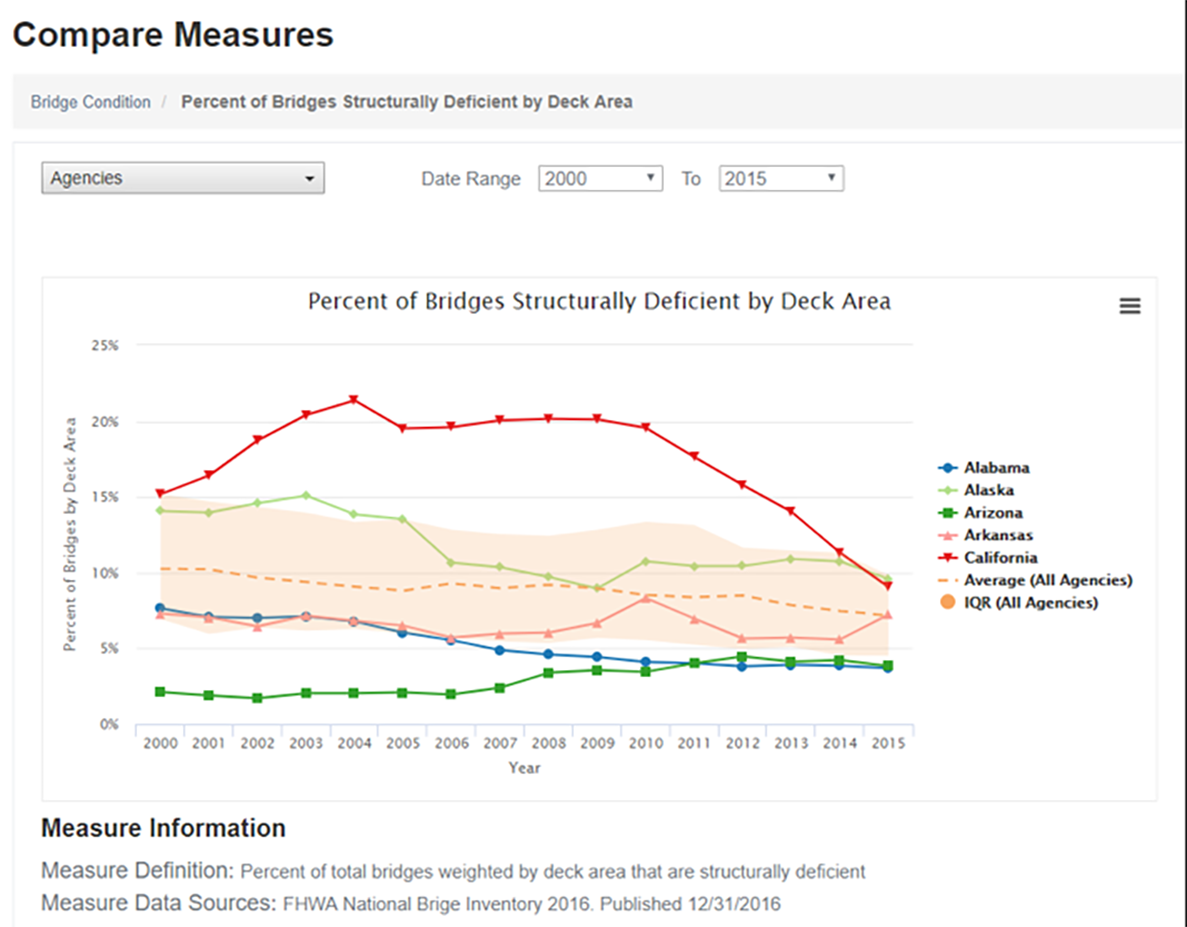6.1.2.3
Benchmarking
In simple terms, benchmarking is a process of comparing performance and practice among similar organizations as part of an agency’s continuous improvement activities. Benchmarking provides an opportunity to learn about approaches used by high-performing organizations to uncover noteworthy practices, inform target-setting activities, or to foster innovation and improvement within an agency. Benchmarking should focus on improvement and lessons learned rather than as a way to penalize underperformers.
As mentioned in Chapter 1, AASHTO has developed a comparative benchmarking tool for enabling state DOTs to compare performance outcomes and practices with peer agencies as part of their continuous improvement activities (http://benchmarking.tpm-portal.com/). This includes a peer selection tool, so agencies can compare practices to peers with similar characteristics. It also features a performance comparison tool with a number of chart options enabling agencies to compare results. For instance, an agency may elect to compare pavement smoothness characteristics with a neighboring state. There is also a portal to facilitate the exchange of practices among registered DOT users through a Notable Practice Narrative.
An example from the AASHTO TPM Portal showing a comparison of bridge deck percentage determined to be structurally deficient is shown in Figure 6.2. Similar comparisons are available for safety, environmental, and non-motorized (bicycle and pedestrian) performance measures. For transit agencies, Transit Cooperative Research Program (TCRP) Report 141, A Methodology for Performance Measurement and Peer Comparison in the Public Transportation Agency, provides specific guidance for comparing performance with other agencies.
Figure 6.2 Example Performance Comparison from the AASHTO TPM Portal
Source: TPM Portal. 2019. http://benchmarking.tpm-portal.com/compare/bridge-condition/deficient-bridges
